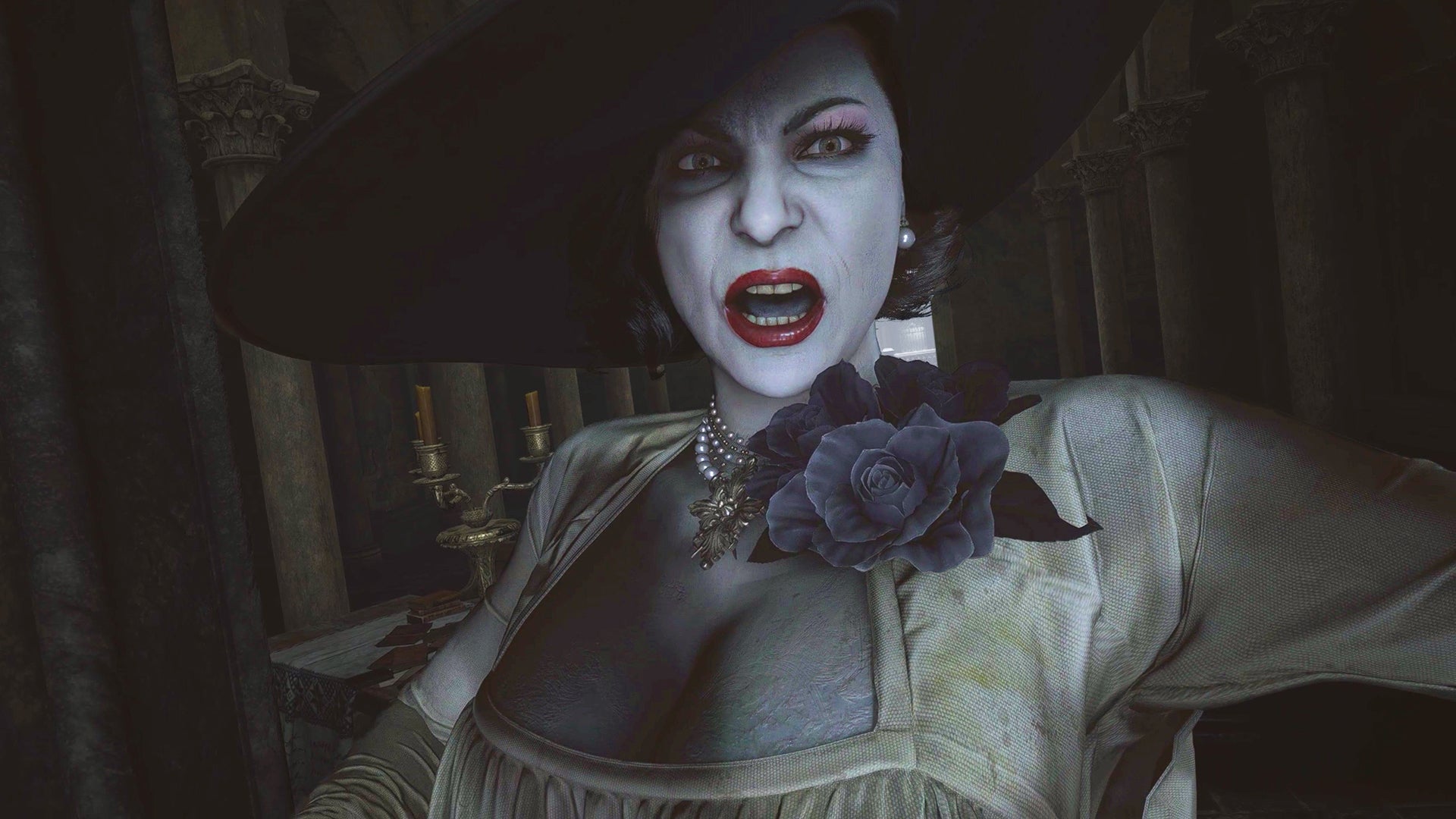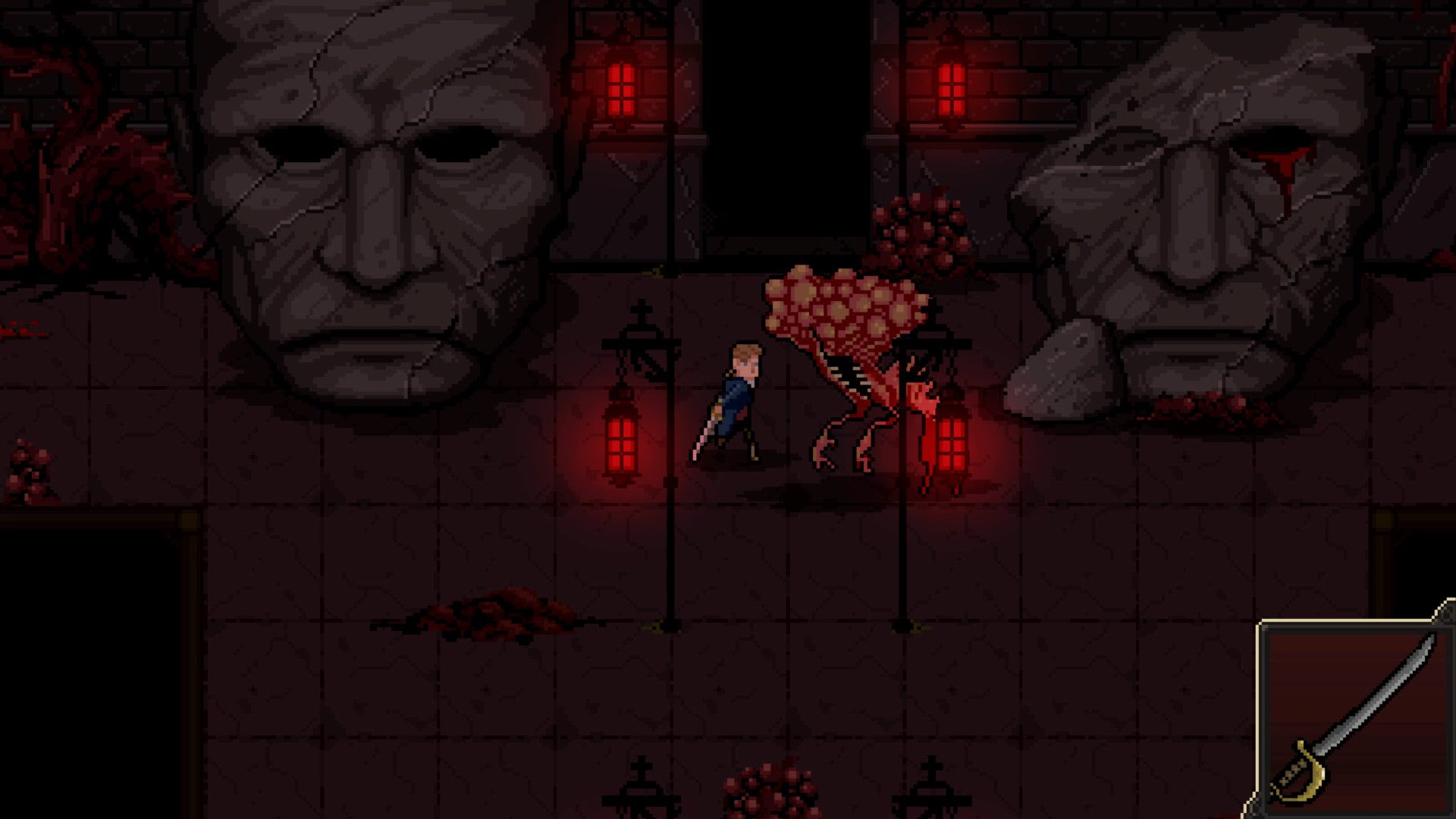You go to type a comment but, uh, your fingers are gone, or something. Just hear me out. Survival horror games are unicorns. With Resi 8, the unicorn grandaddy turned his sparkly back on his progeny and pranced off to graze on a dewy meadow of FPS mechanics, unlimited inventory space, and (cleverly disguised) linear exploration. “You won’t forget us?” asked the baby horrorcorns. “Neigh,” came the response. “Wait!” cried the behorned foals. “Does that mean neigh you won’t or neigh you will?” But their prancing pink paterfamilias was already gone, braying something under his breath about vampire boobs. I’d like to explore why I reckon there’s less big budget survival horror around than I would like, but I’d better bolster this claim upfront by clarifying what I personally feel typifies the genre. The short answer is: Resident Evil 1, and games like it. But if I were to pry a single golden kernel from survival horror’s buttery genre cob, and hold it up as an emblem - an ur-nel, if you will - it would be player vulnerability. Vulnerability means limitations. Health and restorative items. Ammunition. Situational awareness. Safe places. Possibly even narrative direction. All should be in short supply. So why is, say, Back 4 Blood not survival horror? You can run dry of ammo and medkits. There are zombies, and sometimes the zombies ambush you. Well, bear with me here, but I believe survival horror games are not a type of action, adventure or puzzle game as much as they are a type of strategy game. The design structure of Resi 1 and its fantastic remake mean that success is based on how well you plan for the future. Limited ammunition is one thing, but the actual trick is that there aren’t enough bullets in the Spencer Mansion to kill everything in the game. So it becomes about planning routes; feeling out the Mansion for the most optimal throughways, clearing them of threats, and having exit strategies in mind. Alongside this is inventory management: taking only what you need, and leaving enough space for anything you might pick up along the way. Both Resi 4 and Resi 2 remake automated some of this tension, to an extent, with adaptive difficulty systems. But to do this stuff well requires a loving designer’s hand to individually sculpt each route and hurdle, each milestone and shortcut. It requires a type of design that is continually in conversation with itself, ensuring the shotgun shells you picked up a half hour in don’t risk making you overpowered for the midgame. All game design is hard, natch. I am merely an internet dickhead. But I am going to brazenly stride out of my wheelhouse and say that this type of design is harder than most. And to what end? Disempowerment is a niche mood. Stealth games don’t always sell particularly well. The Evil Within 2 did not sell well. REmake 2 did fine, but I reckon a lot of that was on name recognition. It’s a lot of work without guaranteed return. You know what did do well? Phasmophobia. It’s a game that I feel is emblematic of where survival horror is right now - a scattered host of creative offshoots that pick and choose founding elements, then use them as a springboard to create more modern offerings. I can’t say it doesn’t make sense, either. Why write a host of NPC’s with limited interactions when your mates can delve into the darkness with you? Why rely on static narrative to recreate The Thing’s sense of paranoia and distrust when you can make players suspicious of each other in real time? Other horror successes have taken the opposite route, looking further back into the past than even Resi 1, eschewing mechanical concerns for pure narrative spooks. Until Dawn and its wayward offspring, for all their sparkly motion capture, are effectively FMV games, but make much more sense as a contemporary Netflix and snacks group experience than trying to explain to your aunt how tank controls work. Fear is easier to extract in insolation, decoupled from mechanical baggage. The explorable escape-room/ghost train experiences that run from Slender and Amnesia all the way up to P.T and the quieter moments of Resi’s most recent incarnation ask little more from the player than a willingness to push on into the horrific. Checking your inventory every fifteen minutes to manually combine shotgun+shells is, I’ll admit, not particularly spooktastic. It’s not even spooxcellent. Kicking you off the bus into murdersville with nothing but a flashlight and a tight, locker-sized bod is, you might argue, disempowerment in its purest form. But my love for classic survival horror comes from a belief that disempowerment is most keenly felt when the memory of being recently ready to throw down with the dead still lingers. Scripted vulnerability is enforced by a designer, paired with the comforting knowledge that a similarly scripted solution is sure to be close at hand. But running out of supplies in Resi is no-one’s fault but your own. There’s no guarantee you’ve even got the means to survive to the night. All I want for spook month is more classic survival horror, and I will piss and moan until I get some. But you know what? None of my complaints actually matter. I am but a crusty relic, lacking even the relevance to curse whatever wayward explorers exhume me from my dusty crypt. Resident Evil 8 sold extremely well, was a lot of fun, and made a lot of people happy. Even better than this, though, is the fact that I don’t even have to be diplomatic about it. Survival horror has, like Bruce Campbell’s chin, stood the test of time. The indie space has my back. “A good survival horror is defined by its exploration and resource management,” Nicolás Sánchez Baile, programmer on Lamentum, tells me. “It has to convey to the player the feeling of not being safe at any point during the exploration.” Lamentum is a richly gothic pixel art gem that blows the dust from the survival horror playbook then uses it to summon awful things from the beyond. Both he himself and artist Fran, says Baile, shared a passion for both pixel art and survival horror, and Lamentum was the result. Tormented Souls is another recent offering, and it’s as faithful as they come. Fixed camera angles. Limited save items. Uncannily effective ham-and-cheese-toastie voice acting. The works. It’s got a spooky priest, too. And a nailgun. And Remothered: Broken Porcelain is, by most accounts, a bit of a technical mess. But it gets a mention for echoing Haunting Ground, the 2005 offshoot of the Clock Tower Series. Did you know the dog from Resi 4 is a reference to the dog in this game? His name is Hewie. He is from a simpler, pre-Chorizo time where dogs could be in games because they wanted to, not because we’d all been so infantalised by collective trauma that the briefest canine cameo was a balm for our tattered souls. Woof. This dreadful deluge doesn’t seem to be slowing down either. I haven’t had a chance to play Alisa yet, but i looks great. It appears to feature pant-shittingly scary dolls, a rare but effective beastie that my favourite horror writer, Thomas Ligotti, has made me even more afraid of. As for the future, I’m cautiously optimistic about Choo Choo Charles. I love the idea of open world survival horror. Evil Within 2 dabbled with it to great effect, and Days Gone pulled it off for about 45 minutes before you got overpowered, so I’d welcome more. So, what have we learned? That making any definitive statements about the death of a certain genre, while useful if you’re trying to make a point in a spicy, devilishly handsome op-ed, requires a certain amount of tunnel vision, and that indie games are in such a fantastically diverse place right now that most tastes are catered for. Bless these visionary necromancers for dredging up such wonderful corpses, dressing them up, and dragging them along to the party.



